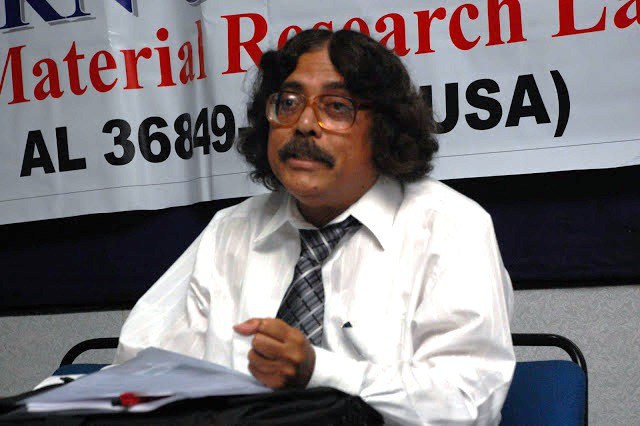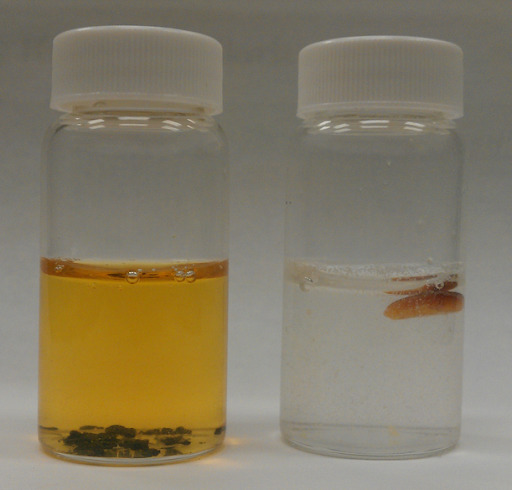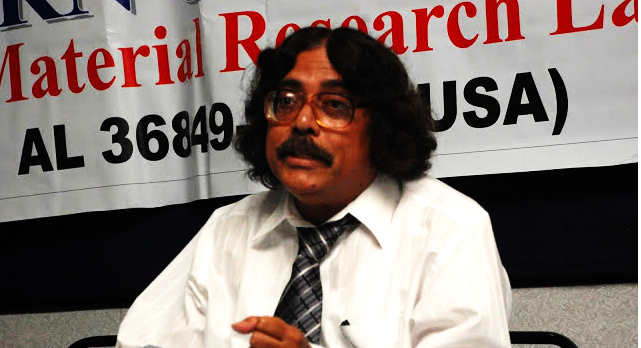Novel Polymer-based Protection against emission / leakage of Nuclear Radiation including Radioiodine from Micro and Small Modular Reactors

By: Mrinal Thakur
Introduction
Nuclear radiation from reactors and explosives based on fission (uranium, thorium or plutonium) includes radioactive iodine (I-131, I-129) which is poisonous and causes thyroid cancer among other illnesses. The worse part of radioactive iodine is that it is volatile at room temperature and can leak out of reactors and cracked / spent fuel rods to the atmosphere. Iodine is partially soluble in water and common chemical solvents, therefore, can mix in and be absorbed in food, milk, plants and in living organisms leading to fatal and / or long-term health hazards. The half-lives of I-131 and I-129 are 8 days and 15.7 million years respectively. About 3% of the fission product is radioactive iodine and it decays by gamma and beta emission. Clearly, the capture/containment of radioactive iodine is of great importance and a challenging task for any nuclear reactor. In particular, micro and small modular reactors (MMR and SMR) which are designed to be portable and be used closer to the community, may greatly benefit by reducing radiation leakage if proper protection / shield is used utilizing appropriate and effective materials.
Although iodine pills (potassium iodide) are usually administered to workers at the reactors to saturate the thyroid to avoid the effect of radioactive iodine, such treatment is cumbersome, has many side effects, and may not always be effective. In addition, an individual who is unaware of whether he/she is going to be exposed would not be able to take this precautionary measure.
While a nuclear disaster can cause extensive health issues / fatalities over a short period of time, the nuclear power generators in normal day-to-day operations may leak out sufficient radioiodine that may accumulate in the proximity to cause serious health hazards. Recent reports indicate that the state of New York and the vicinity (New Jersey and Pennsylvania) where there are 13 nuclear power plants in operation, has significantly (~ 66%) higher thyroid cancer cases within a 90 mile radius compared to the rest of United States. As has been established, there were at least 20,000 thyroid cancer cases in the Chernobyl disaster alone (NBC News, June 7, 2019). What the final figure going to be for the Fukushima-Daiichi disaster is yet to be known. Therefore, having appropriate shields that would capture and hold the radioiodine before it leaks out and contaminate the environment is of critical need.
Novel Polymer-Technology for Protection against Nuclear Radiation including Radioiodine
Micro and small modular reactors (MMR and SMR) have recently received significant attention due to its smaller dimensions, flexibility of design, portability, potential reduction of manufacturing cost and more versatile use and operation. A novel polymer technology based on nonconjugated conductive polymers has been developed that provides protective cover /shield for any nuclear reactor to prevent / reduce leakage of radiation including radioiodine to the environment. The details of these polymers and their characteristics have been discussed in the published literature and patents. These polymer-based shields can be custom-fabricated based on dimensions and shapes of micro and small modular reactors (MMR and SMR).
When iodine interacts with such a polymer, electron-transfer occurs from the isolated double-bonds in the polymers to the iodine atoms. Thus radical cations are formed which hold the iodine atoms (counter-ions) immobile close to the double-bond sites. This process / interaction (called doping) leads to many orders of magnitude increase in electrical conductivity of these polymers, although this rise of conductivity may not be of significant relevance to the present application. The major outcome of using films/sheets of these polymers is that iodine and its isotopes are captured / absorbed and held immobile within these polymeric chain molecules. Any enclosure/shield made of these polymers will stop leakage of radioactive iodine – thus providing protection. The polymer in appropriate forms can also be sprayed in air or water as cleansing agents of radioactive species. These shields in appropriate form can be used for nuclear reactors on land, in ships and in other transportation systems.
The fact these polymers capture and render iodine immobile has been established. The chemical structures and characteristics of these polymers after iodine-doping have been investigated using various microscopic, electrical and spectroscopic (Optical Absorption, FTIR, 13C NMR, EPR and Raman) measurements. As all these experimental results have shown, the dopant iodine interacts with the double bond in the polymer backbone and forms a polaronic state (radical cation) as an electron is transferred from the double bond to the dopant creating a hole / positive charge carrier at the double bond site. The iodine atoms as I3– become bound to the radical cations because of Coulomb attraction. The presence of I3– has been identified / confirmed by resonance Raman and Mossbauer spectroscopies. The color of the polymer becomes darker (absorption increases) as more iodine atoms interact and get absorbed within the polymer (Fig.1). Before interaction with iodine these polymers are transparent in color.
Meeting the Federal Safety Standards; Capture /Intake of Iodine by these Polymers
These polymeric materials interact instantly with iodine holding the iodine atoms immobile. A maximum of up to about 0.8 molar concentration of iodine is absorbed. According to the federal safety standard for radioactive iodine (in drinking water), only 3 pCi/L or equivalently about 0.01 rem per year which amounts to an iodine molar concentration of about 10-21 per day, is considered hazardous. According to the International Commission of Radiation Protection (ICRP), 0.1 rem per year is considered the limiting radiation dose. These are extremely small numbers, therefore, threshold for health risk is very small! The molar concentration of iodine (ICRP threshold of about 10-20) is many (about 20) orders of magnitude less than the saturation molar concentration (0.8) of iodine in these polymers. In other words, many orders of magnitude in concentration of radioiodine can be captured and held within these polymeric protective shields – therefore safety for people outside the reactor can be assured.
As more iodine is captured / absorbed, these polymers (originally transparent) become darker in color. A photograph showing the color change of one such plastic sheet for different duration of interaction with iodine is shown in Fig.1. The darkest picture on the right corresponds to the highest concentration of iodine (about 0.8 molar).
Fig.1 The color of the nonconjugated conductive polymer changes from transparent to dark as more iodine interacts and becomes bound. The molar concentration of iodine corresponding to the darkest color (extreme right) is about 0.8.
The following experiment was performed to show that these polymers capture / extract iodine from an iodine-water solution. In a solution of iodine in water which is brown in color a small piece of a nonconjugated conductive polymer was introduced. After a few hours the solution became colorless while the polymer became darker in color showing that iodine has been captured by the polymer (Fig.2). Therefore, radioactive iodine in water produced in nuclear reactors can be cleansed using these polymers. Similarly, these polymers can capture iodine existing in vapor phase in air around a reactor. The radioactive iodine leaked out to seawater / ground water during the disaster in Japan could have been cleansed using these polymers.

Fig.2 Capture of iodine by a nonconjugated conductive polymer from iodine-water solution (brown color). Left: Iodine-water solution; Right: Iodine is captured by nonconjugated conductive polymer leaving colorless water.





